Monarchy
 From Rationalwiki
From Rationalwiki .svg.png)
“”Crowns do queer things to the heads beneath them.
|
| —George R.R. Martin, A Clash of Kings, "Tyrion (I)"—Tyrion Lannister.[1] |
“”The stinking puddle from which usury, thievery and robbery arises is our lords and princes. They make all creatures their property—the fish in the water, the birds in the air, the plant in the earth must all be theirs. Then they proclaim God's commandments among the poor and say, "You shall not steal."
|
| —Thomas Müntzer, a leader during the German Peasants' War |
| Oh no, they're talking about Politics |
| Theory |
|
| Practice |
|
| Philosophies |
|
| Terms |
|
| As usual |
|
| Country sections |
|
v - t - e
|
Monarchy is a form of government in which one person, the monarch, reigns as head of state for the duration of their lifetime or until their abdication. The monarch's position is typically inherited from their predecessor on a hereditary basis, although this was and is not always the case. Similarly, there can be wide variations in the level of political power wielded by monarchs, ranging from absolute monarchies, where the monarch has complete power, to constitutional monarchies, where the monarch can only rule within strict legal constraints. Monarchs usually bear the title of "King" or "Queen," but some preferred more prestigious titles like "Emperor" or "Caliph".
For much of history, monarchies were the most common form of government. The philosopher Aristotle (384–322 BCE), who received his higher education in republican Athens but subsequently went and worked for the royal family of Macedon, regarded monarchy (in the form of a Greek city-state) as the best form of government, though he considered its corruption (tyranny) the worst.
Despite common belief, early monarchs did not wield absolute authority, as the limitations of transportation and communication meant that governments needed a large degree of decentralization to function properly. In Medieval Europe, for instance, the system of feudalism entailed monarchs delegating a great deal of power to locally ruling noble vassals.[3] In Imperial China, emperors would also place military governors in charge of the empire's border regions, which became a major problem when General An Lushan rebelled and began one of the deadliest civil wars in Chinese history between 755 and 763 CE.[4] Monarchs also had to struggle against other institutional forms of authority, such as religious leaders, traditional expectations, and local elites. As American Renaissance historian William Bouwsma said, "Nothing so clearly indicates the limits of royal power as the fact that governments were perennially in financial trouble, unable to tap the wealth of those most able to pay, and likely to stir up a costly revolt whenever they attempted to develop an adequate income."[5]
As technology improved and rising capitalist classes further challenged the traditional authorities, monarchs were able to centralize their power, especially in Europe, where this phenomenon became known as the "Age of Absolutism".[6] As monarchies became more powerful, pushback against the very concept increased, climaxing in major incidents such as the American Revolution and the French Revolution. Monarchs survived during this period by either accepting constitutional limitations on their power, or by redefining themselves as symbols of nationalism. World War I saw many of the region's most powerful and historic monarchies dismantled, such as the Empires of Germany, Russia, and Austria. Many of the world's remaining monarchies, such as in Japan, Thailand, and Bulgaria, recreated themselves as far-right royalist dictatorships and then joined the bad guys in World War II.
In the modern day, monarchy is considered a relic of the past across much of the world, with republicanism firmly entrenched across both American continents, most European monarchies bound by constitutional limits, and most monarchies in Africa existing at a sub-national level. That said, monarchy is not necessarily backward or ultra-conservative, any more than republics are necessarily progressive; there are a number of democratic constitutional monarchies. At its best (or at least when done right), a monarchy can help instill a sense of continuity and community to its realm, with the monarch themself serving as a mediator between different democratic bodies; ideals like noblesse oblige (that those in the nobility actually try to do something deserving of their position) not to mention the notion that royals frequently live in "gilded cages", can also provide additional checks and balances to power. There have been plenty of liberal, if not impressively democratic, monarchs. One example is King Juan Carlos I of Spain (reigned 1975-2014), who spearheaded the dismantling of Francisco Franco's fascist polity.
Types of monarchies[edit]
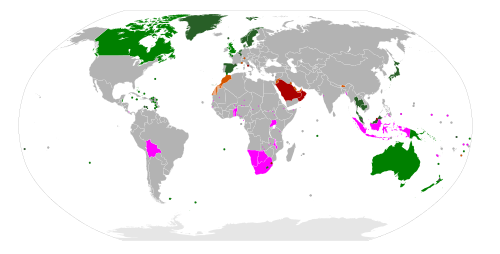
Absolute monarchies[edit]
This category of governance notably appears in the dictatorship article as well, as the line here can get blurry. Unlike monarchies earlier in history, in which their rulers had to contend with other forms of institutional authority like clergy and nobles, absolute monarchies are regimes in which the monarch truly rules without limitations on their power. This form of government reached its peak during the "Age of Absolutism" of 17th century Europe, but even the quintessential absolutist, Louis XIV of France, had to deal with local nobles and the fact that towns and provinces had their own privileges and systems of law.[7]
Absolute monarchies are far less common today, as this form of government struggled to justify its own existence against the rising tide of popular sovereignty. On the other hand, the remaining absolute monarchs now have many more tools to cement their own rule and ensure the continuance of their regimes, with these monarchies being more absolute than any before. In Saudi Arabia, for instance, the government is able to use strict censorship and surveillance to maintain its control on information even in an environment of increasing interconnectedness.[8]
Current absolute monarchies include Saudi Arabia, Oman, Brunei, and eSwatini. The Vatican City is also an example, although the pope being an elected monarch and the state's citizenship only being conferred by appointment to a job within the city[9] makes this a rather unique case. Additionally, the nation of North Korea theoretically abhors the concept of monarchy, yet has been a dictatorship ruled by three generations of the same family, with no signs that this hereditary transfer of power will end.[10] Decide for yourself whether Kim Jong Un belongs in this category, but he is at least interesting to mention.
_(cropped).jpg)
King Salman of Saudi Arabia. (Don't let that affable expression fool you; this guy's government executed over 100 people in 2023.[11])

King Haitham bin Tariq of Oman. Gets points for the nice flowers in the background.
_(2).jpg)
Supreme Pontiff Leo XIV of the Vatican City.
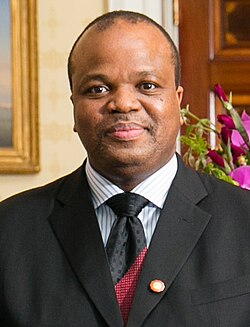
King Mswati III of eSwatini.
Constitutional monarchies[edit]
At the risk of earning a "no shit, Sherlock," a constitutional monarchy is a government in which the monarch's role is limited by a written or unwritten constitution. But we let's look a bit deeper into this, shall we? Constitutional monarchies are a nice-sounding concept, but this term encompasses a broad variety of regimes and human rights situations. Thailand, for instance, is a military dictatorship[12] where the monarchy is considered to be "above politics".[13] Then you have the Kingdom of Jordan, which has a constitution and an elected parliament, but still leaves the king with final say on most legislative and executive matters and still has a host of human rights issues like restrictions on speech and torture.[14]
Towards the other end of the spectrum, you have the United Kingdom, probably the world's most famous current monarchy. While the British monarch is expected to serve as a figurehead, they serve certain ceremonial functions like granting royal assent to bills before they can become law (the last refusal was in 1708[15]), opening and dissolving Parliament, and inviting the leader of the party that won the most seats in the House of Commons to become prime minister and form a government.[16] In a similar situation is the Emperor of Japan, who actually has even less power since he's not even nominally listed as chief executive by the Japanese constitution.[17] The Japanese emperor is also not the commander in chief of the Japan Self-Defense Forces, that role instead being fulfilled by the Prime Minister.[18] These limitations are tied to the postwar restructuring of Japan's government under United States supervision after its defeat in World War II.
In cases where the monarch's power is nearly nonexistent, they are usually retained in order to serve as the symbol of the nation and a nod towards tradition. In other words, these are situations in which a country wants to have a democratic system, but still really likes its monarchy. In Japan's case, they liked their monarchy so much that the United States, despite having defeated and occupied it, still didn't consider it feasible to abolish the emperorship.[19] In the UK, the monarchy is also cited as being a major generator of tourism revenue, commonly used as a major argument in favor of retaining it.[20]
.jpg)
King Charles III of the United Kingdom.
.jpg)
Emperor Naruhito of Japan.
.jpg)
King Abdullah II of Jordan.
.png)
King Rama X (personal name Vajiralongkorn), of Thailand. This guy is infamous for his mistresses, crop tops, and fake tattoos.[21]
Crowned republics[edit]
The term "crowned republic" is also used to refer to situations where the monarch exercises no effective political power, particularly in British Commonwealth countries where the monarch doesn't even live in the nation they're ruling. This is a fairly significant term in Australia, with the 1993 Republic Advisory Committee![]() describing Australia as a "crowned republic" on the basis that, "sovereignty resides in its people, and ... all public offices, except that at the very apex of the system, are filled by persons deriving their authority directly or indirectly from the people".[22]
describing Australia as a "crowned republic" on the basis that, "sovereignty resides in its people, and ... all public offices, except that at the very apex of the system, are filled by persons deriving their authority directly or indirectly from the people".[22]
Non-sovereign monarchies[edit]
A non-sovereign monarchy is a form of government in which the monarch of the polity is subject to a higher authority.[23] This situation usually happens when a certain cultural or ethnic group is permitted to be semi-autonomous under their own monarchy. One such example of a non-sovereign monarch is the king of the Zulu nation in South Africa.[24] New Zealand also has a queen within its borders who represents the Maori people.[25] The UAE is somewhat unique in that it is a federation of seven monarchies, the highest ranking two of whom take the position of prime minister and president.[26]
.jpg)
Nga Wai Hono i te po Paki, Queen of the Māori.

King Misuzulu Sinqobile kaZwelithini of the Zulu.
.jpg)
Rilwan Akiolu, the Oba of Lagos.
Succession[edit]
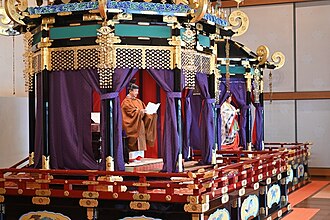
Hereditary monarchies and royal dynasties[edit]
“”All hereditary government is in its nature tyranny. An heritable crown, or an heritable throne, or by what other fanciful name such things may be called, have no other significant explanation than that mankind are heritable property. To inherit a government, is to inherit the people, as if they were flocks and herds.
|
| —Thomas Paine, The Rights of Man, Chapter 3.[27] |
Ah, hereditary monarchy, a system of government in which a ruler inherits their position by virtue of being born to the right family at the right time. This is the most common form of monarchy, but just how to prioritize which family member takes the throne can be a major decision and a major source of family feuding.
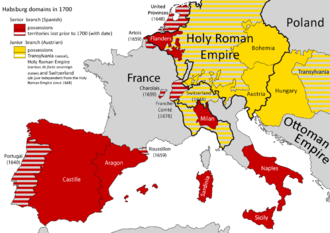
Since the throne would pass between relatives, families would tend to keep hold on the thrones of one or more nations. These noble houses would become dynasties, some of which shaped the history of the world. The Habsburg dynasty, for instance, controlled the Spanish Empire, the Holy Roman Empire, and Austria, meaning their rule encompassed much of the planet.[28] Other notable dynasties of Europe included the Romanovs of the Russian Empire, the Hohenzollerns of Prussia and then the German Empire, and the Bourbons of France.[28] Rule in Imperial China also fell to a series of powerful dynasties, many of which lasted centuries.[29]
_(cropped).jpg)
Primogeniture means the eldest child of the monarch inherits everything. This is the system most people will immediately think of when told the phrase "hereditary monarchy." Historically, agnatic primogeniture was preferred (in both monarchial and personal affairs), where women were excluded from inheriting under any circumstances.[30] In other cases, a woman could inherit, but only if there were no other male candidates, and her children would be barred from the succession on the basis that their mother's bloodline conferred no rights. In modern Europe, this has largely been abandoned, both to make successions simpler in a situation where no clear heir has a penis, and also because sexism sucks. The British Commonwealth member states all agreed to implement full, or cognatic primogenture, meaning that the oldest child inherits the throne regardless of their biological sex.[31]
Since the other children of the monarch kinda got fucked over under primogeniture, some monarchies in the Medieval age decided to partition their titles between the various sons of the monarch. This most famously occurred when Charlemagne's son Louis divided his great Western European empire among his sons, dividing Europe and beginning years of bloody civil war.[32] The modern nation of France is descended from the western portion of this partition, and Germany is descended from the east.
Until recently, Saudi Arabia used the seniority method of succession, where the monarch's eldest younger brother would take the throne upon his death. However, in 2017, King Salman broke tradition and announced that his son Mohammed bin Salman would be his successor, a move which caused uncertainty and resentment.[33] While the Crown Prince's position is unlikely to be challenged, he spent much effort on launching internal crackdowns against his perceived rivals in order to solidify his succession.[34]
Elective monarchies[edit]
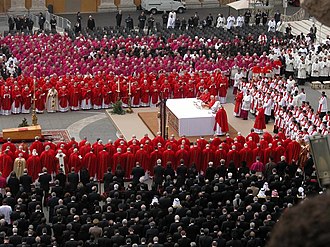
Alternatively, a monarch can be elected. This isn't a direct election like for a Member of Parliament or a US President. Instead, elections would be held within a small body of nobility or other powerful figures. In the Holy Roman Empire, for instance, an Electoral College of seven figures, three of whom had to be high-ranking Catholic archbishops, elected the new emperor.[35] Emperors would also usually be chosen from the same house as the last, allowing the Habsburg dynasty to maintain its extended control over the throne.
The Polish-Lithuanian Commonwealth also saw its king elected by the nobility, who saw this system as defending their traditional rights against the type of increasingly absolutist rule found in the monarchies of Western Europe.[36] Poland ended up with kings from various European dynasties, which caused trouble for them in 1655 when the king of Sweden decided he didn't like his relative very much, invaded Poland, and began one of the most disastrous periods in Polish history.[37]
The Vatican City, and by extension the Catholic Church, functions as an elective monarchy, as bishops and Vatican officials from around the world gather as the College of Cardinals to discuss who to choose as a new pope after the death of the previous. The actual election, called the conclave, only has 120 voters and occurs inside the Sistine Chapel under an oath of secrecy.[38]
Cambodia is another modern example of an elective monarchy, as members of the royal family who are at least 30 years old assemble to elect the new king.[39]
Traditional problems and weaknesses[edit]
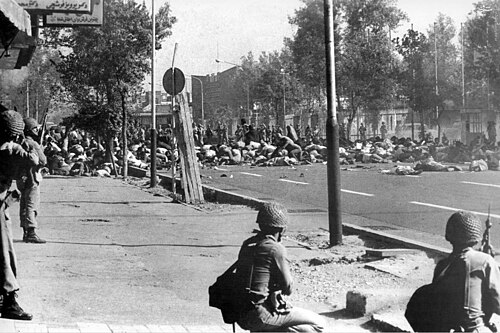
Authoritarianism and lack of accountability[edit]
This is obvious, but it's still worth pointing out. Even in situations where the monarch is constrained by traditional forms of authority, absolute and feudal monarchies left little room to resist the monarch's decisions without resorting to rebellion. As a result, a country saddled with an incompetent or malicious monarch is either stuck in that situation or else must resort to some form of bloodshed. And history books are filled with monarchs who were incompetent like "Bad King John" of England, or vicious, like Ivan the Terrible of Russia.
In the Holy Roman Empire, a monarchy which was heavily decentralized, the average person still had little way to improve their lot. In an atmosphere of heavy taxation, religious oppression by the Catholic Church, and deep social change, the German Peasants' War of 1524-25 erupted, resulting in the direct deaths of 100,000 people and further loss of life due to the destruction of farmland.[40] In Imperial China, the possibility of a bad emperor was acknowledged and accounted for by the concept of the Mandate of Heaven, which stated that an emperor would suffer misfortunes and lose the obligatory obedience of the people if he ruled unwisely.[41] Even here, however, the main counter to a bad emperor was a bloody revolt.
While constitutional monarchies have defanged this problem to a major extent, the world's absolute monarchies are even more relentlessly authoritarian than before. Saudi Arabia, for instance, has one of the worst human rights situations in the world, and the citizenry have no ability to peacefully agitate for change or take political power.[42]
Succession crises[edit]
.jpg)
Passing the crown to a hereditary successor might sound simple, but all too frequently, monarchies have collapsed into chaos and warfare due to a suitable heir not being readily apparent. Succession can break down for a variety of reasons, such as when multiple people have claims to the throne, or when the heir happens to be a foreigner, or when the heir is a woman.
This problem goes all the way back to the Roman Empire, as Caesar Augustus, the first emperor, failed to create a legal framework to determine who would come after him and his successors.[44] As a result, emperors were just as likely to appoint a loyal lieutenant or support to succeed them as they were to simply pass the title on to their sons. This chaotic system led to numerous coups and civil wars, weakening the empire.
Learning from this, Medieval monarchies, especially in Germany, adopted Salic Law, a strict tradition governing who could and could not inherit the throne in various circumstances. It famously forbade women from inheriting. This too failed to prevent conflict, as English king Edward III claimed the French throne through the descent of his mother, and later began the Hundred Years War to defend that claim.[45] Salic Law being rescinded or ignored also caused conflict. In 1713, Holy Roman Emperor Charles VI issued an edict that his daughter Maria Theresa would inherit the Holy Roman Empire and Austria.[46] Upon her ascension to the throne, numerous European powers intervened on the basis of the questionable succession, causing the bloody War of the Austrian Succession, in which hostilities even extended into India and North America.[47] Later, in Spain, Salic Law was revoked at the last moment to allow the accession of Isabella II to the throne in 1833,[45] sparking multiple civil wars.[48]
The primary heir being a foreigner, which can happen due to the complexities of marriage and family trees, can also cause major problems. Once again, we'll look at Spain. During its reign over Spain, rulers of the House of Habsburg liked to, uh, keep it in the family in order to keep their royal titles in the family. This led to King Charles II's severe deformities such as an enlarged tongue, gastrointestinal problems, autism spectrum disorder, and sterility.[49] When he died in 1700, he did so without leaving any children or a clear heir. Thus, the massive Spanish Empire was set to pass to Philip of Anjou, who was both French and a member of the French royal dynasty. The prospect of two of the major powers of Europe uniting under one dynasty was a major "oh shit" moment for France's various enemies, and this led to the disastrous War of the Spanish Succession, which sent both France and Spain into a period of decline.[50]
Succession problems aren't limited to the past, either. In Japan, the current emperor, Naruhito, only has a daughter, while succession is limited to direct male heirs.[51] Uh-oh.
Inbreeding and hereditary disorders[edit]
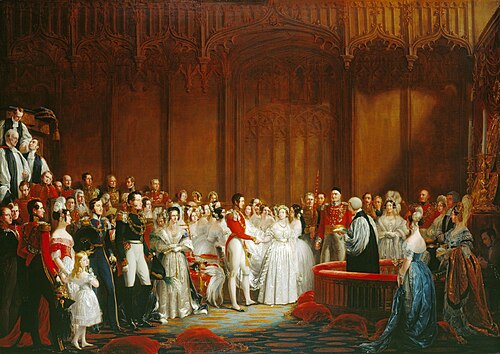
By the way, since we mentioned King Charles II of Spain in the above section, let's talk about the inbreeding issue. For most of European history, marrying commoners was verboten, and marrying a lower-ranked noble was also right-out. This substantially reduced a prince or princess' dating pool. As a result, royals tended to marry close relatives with increasing frequency as time went on. The result of such unions is inbreeding, referred to by scholars as "consanguinity", and prolonged inbreeding can drastically increase the risk of hereditary diseases.
The Habsburg dynasty, which originated in Switzerland, came to dominate much of the world by taking the thrones of the Spanish Empire (which at times included the Low Countries and Portugal), the Holy Roman Empire, and Austria (which included Hungary and Czechia). For our interests though, the Habsburgs were mainly notable for rarely marrying outside of their own dynasty, a strategy intended to keep their various royal titles within the house.[49] From 1516 to 1700, about 80% of marriages within the Spanish branch of the Habsburg dynasty were consanguineous, usually between first cousins, double-first cousins, and uncles/nieces.[49] Infant mortality in the family rose drastically, and this finally culminated in the disastrously impaired King Charles II of Spain.
In the United Kingdom, married Prince Albert from a realm in Germany, despite the fact that Victoria's mother and Albert's father were siblings.[52] Since she was the prestigious ruler of the British Empire, her children were considered hot commodities for marriage by other royal families. Of her nine children, one was her successor Edward VII, a different one was the mother of Kaiser Wilhelm II of the German Empire, another married Tsar Nicholas II of Russia, and two other daughters married into the monarchies of Romania and Spain.[53] You'll know at least two of these names if you're familiar with World War I. Unfortunately, Queen Victoria had hemophilia, a bleeding disorder which was to become known as the "royal disease", due to the impacts it would have on future generations. Tsar Nicholas II's son Alexei inherited a very severe case, and his parents sought the aid of Grigory Rasputin, a strange mystic whose antics damaged the royal family's reputation and contributed to its downfall in the February Revolution.[54] Victoria also passed the disease porphyria into the German imperial monarchy, which was already descended from the British line in various ways. While historians can't know for sure, porphyria probably played a role in Kaiser Wilhelm II's erratic behavior leading into World War I.[55]
While royal families today do their best to avoid the inbreeding of the past, the consequences are still felt. Queen Elizabeth II of the UK and her husband Prince Philip were both third cousins and second cousins once removed, meaning that the UK's modern King Charles III is mildly inbred (over 7 generations he has 196 ancestors instead of the expected 254).[56]
Restoration of monarchies[edit]
The 20th century saw a large number of monarchies dismantled. Notable examples are Korea (1910, annexed by Japan; later freed and broken up into a communist state and an anti-communist state in 1945), Imperial China (1911, became the Republic of China and later the People's Republic of China); the Russian Empire (1917, became the Soviet Union and then after the Cold War the Russian Federation); German Empire (1918, became a democratic republic, then something else entirely for a short time, then divided into a dictatorship + a democratic republic, and finally united as a democratic republic); Austria-Hungary (1919), and the Ottoman Empire (fell apart as consequence of defeat in World War I, 1923). After the end of World War II several more joined the club: Bulgaria (1946); Yugoslavia (1943); Italy (1946); and Romania (1947). Greece and a few African and Asian states (Egypt, Ethiopia, Rwanda, Burundi, Iraq, Iran, Libya, Afghanistan, Vietnam) became republics (dictatorships, to be exact) during the second half of the 20th century.
There have not been serious proposals to restore the monarchies in any of those countries, except Cambodia (where Hun Sen![]() has been ruling as an autocrat since the end of the Khmer Rouge reign of terror and the royal family has been one of the two entities vying to wrest power from him). However, the former Tsar Simeon II of Bulgaria was elected Prime Minister of that country in 2001 as the head of a liberal party, the Simeon II National Movement.
has been ruling as an autocrat since the end of the Khmer Rouge reign of terror and the royal family has been one of the two entities vying to wrest power from him). However, the former Tsar Simeon II of Bulgaria was elected Prime Minister of that country in 2001 as the head of a liberal party, the Simeon II National Movement.![]() He won some awards for his efforts, but was voted out at the next election, and the election after that his party was voted right out of parliament. Following the breakup of Austria-Hungary, emperor Karl abdicated the throne of Austria but refused to step down as King of Hungary, since the monarchy was popular among Hungarians. He was exiled but made two attempts to reestablish himself on the throne before his death in 1922. In the lead-up to World War II, the former Allies started to come around to the idea of putting his son on the throne as a counterweight to the rising tide of fascism, but by then it was too little, too late.
He won some awards for his efforts, but was voted out at the next election, and the election after that his party was voted right out of parliament. Following the breakup of Austria-Hungary, emperor Karl abdicated the throne of Austria but refused to step down as King of Hungary, since the monarchy was popular among Hungarians. He was exiled but made two attempts to reestablish himself on the throne before his death in 1922. In the lead-up to World War II, the former Allies started to come around to the idea of putting his son on the throne as a counterweight to the rising tide of fascism, but by then it was too little, too late.
Pretenders to abolished thrones have support among fringe minority groups of "monarchists" and "royalists"[note 1] who believe that restoring their country's monarchy will also restore some fabled former glory. While it can perhaps restore "might" in eyes of their counterparts in another countries, a question arises: at what price? British taxpayers give Queen Elizabeth a budget approximately equivalent to $56 million USs,[57] roughly one dollar per person per year. It is not a great burden for taxpayers, but illustrates the point that royal families do live decadent lifestyles by using (some kind of) charity. It is certainly true that that money could be spent for health care, education, etc. However, the amount of tourism money the Royal family generates, at about 767 million dollars, outweighs the cost of supporting them by 15 times [1] and the Crown Estates generate billions of dollars a year on their own [2]. Furthermore, the same could be said for the support of executive households in republics, which also reaches expensive amounts. Furthermore, former Presidents - even if they don't hold any actual political power even while in office - are often afforded some rather expensive perks; some are even paid the full salary and given full presidential protection for life. A royal family may be expensive, but at least you normally don't have to pay five kings and former kings at the same time.
A major proponent of returning to monarchies was the Austrian, aristocratic, reactionary, socio-political theorist Erik von Kuehnelt-Leddihn.[note 2] Kuehnelt-Leddihn believed that most democracies would eventually lead to totalitarianism by the majority, to the point where he claimed that Nazism was actually a democratic left-wing movement primarily inspired by the French Revolution.[58] He also claimed that monarchies would be better able to fight other radical movements such as fascism, which is kind of hilarious when one considers Fascist Italy and Francisco Franco's Spain and the nature of the countries that largely blew fascism to bits. (Kuehnelt-Leddihn promoted these ideas at the freedom-loving National Review for roughly 35 years, and is one of the reasons why the magazine is no longer taken seriously.)
Another case for monarchies was made by would-be Archduke Otto von Habsburg, who later became a Bavarian MEP in the European Parliament.[59] In contrast to Kuehnelt-Leddihn, he had a healthy respect for democracies and republics, while also condemning the sort of royal decadence that led to the French Revolution. While the actual defense of monarchism incorporates some conservative ideas,[note 3] at least the would-be monarch also attempted to reconcile it with socialism. Compared to Kuehnelt-Leddihn, this comes across as more palatable, although the man himself for all his support for human rights and the European Union had a soft spot for Franco over accepting refugees.[note 4]
Previously abolished monarchies back in the saddle[edit]
That said, some monarchies have managed to reclaim the throne after a Republican interlude. Perhaps the most notable example is England, which went right back from the "Commonwealth" under "Lord Protector" (read, "military dictator") Oliver Cromwell right back to monarchy shortly after the death of Cromwell. Spain even managed to unseat the Bourbons twice (the "Spanish Republic" of the Spanish Civil War was the second Spanish Republic) and endure decades of Francisco Franco only to get yet another Bourbon king upon the death of Franco. Given that Juan Carlos has mostly played his hand well and his successor has not yet done anything truly stupid or offensive, the third Spanish Republic is probably some ways off. Sweden and Norway have both undergone periods where they were governed by different monarchies only to reassert independence under their own monarch later on. Sweden even cycled through three dynasties in the 19th century, ultimately putting a French marshal on the throne rather than going republican. The Netherlands were founded as a Republic, but the Stadholder was a monarch in all but name during the 18th century and it was thus only natural that he be made king in name as well as fact when reinstated during the Congress of Vienna. Albania was a monarchy in medieval times, but was part of the Ottoman Empire and then a republic upon independence until president Ahmed Bey Zogu declared himself king Zog I in 1928.[60] French president Charles-Louis Napoleon Bonaparte likewise upgraded himself to emperor Napoleon III, restoring his family's rule for a few years.
Newly appointed monarchies[edit]
While monarchy is supposed to be imposed by God, there have a fair number of countries who decided to create a monarch. Often but not always these are new countries. This goes back to the Old Testament: in 1 Samuel 8:5-22 the Israelites beg Samuel for a king even after he tells them all the horrible things a king will do: they argue, "Then we will be like all the other nations, with a king to lead us and to go out before us and fight our battles." (20)
The newly independent Belgium hunted around for a king and even got a rejection from the son of French ruler Louis-Philippe before picking a German aristocrat, Leopold of Saxe-Coburg and Gotha, as their first king in 1831.[61] Another German, Prince Otto Friedrich Ludwig of Bavaria, became the first king of modern Greece in 1832.[62]
Monarchy in the United States[edit]
.jpg)
Despite their claims to be a Bibul-luvin' people, the Americans are causing baby Jesus to cry. They not only refuse to adopt a monarchic system of government, but rejected the divinely-appointed monarchy of George III. This is in direct conflict with Deuteronomy 17:15, in which God tells His people, "Be sure to appoint a King over you."
Thus, any American Republican, Teabagger, libertarian, or otherwise who claims to be a Christian is a liar, depending on the extent of Biblical literalism they adhere to. If they are true believers, they should be campaigning for a divine intervention to appoint a King an emperor of the United States. Anything else is a foul, anti-Christian heresy.
And don't think it hasn't been tried. 19th Century San Francisco resident Joshua Norton![]() believed the US should have a monarch, and so selflessly crowned himself Emperor Norton I of America and Protector of Mexico. He became a local celebrity, although his proclamations were ignored outside of San Francisco, which followed them willingly. Many regarded him as mad, but harmlessly so, because "he had shed no blood, robbed no one, and despoiled no country; which is more than can be said of his fellows in that line." His finest moment consisted of protecting Chinese immigrants from an angry mob.[63]
believed the US should have a monarch, and so selflessly crowned himself Emperor Norton I of America and Protector of Mexico. He became a local celebrity, although his proclamations were ignored outside of San Francisco, which followed them willingly. Many regarded him as mad, but harmlessly so, because "he had shed no blood, robbed no one, and despoiled no country; which is more than can be said of his fellows in that line." His finest moment consisted of protecting Chinese immigrants from an angry mob.[63]
It didn't stop there. In the 21st century, a small political faction centered on Silicon Valley, the Neoreactionaries, has been calling for a US monarchy.[64][65] In this new-fangled tech-friendly monarchy, the King will be an autocratic leader on the lines of Steve Jobs, because being good at running a tech company, where almost every problem can be solved by reading the friendly manual (RTFM), is a skill transferable to running a country, where almost no problem can be. Neoreactionaries expound their theories in massive online screeds, composed during their copious free time, which shows how good they are at getting dates. However, once installed, His Majesty will immediately cull his key supporters to prevent any rivals from seizing power themselves give them all horses and fancy titles, which will make them much more attractive. The King will also expel all undesirables, as defined by traditionally reactionary attitudes to race, gender and sexual orientation. What a contrast to Emperor Norton!
Monarchy in Britain[edit]
“”Having a monarchy next door is a little like having a neighbour who's really into clowns and has daubed their house with clown murals, displays clown dolls in each window and has an insatiable desire to hear about and discuss clown-related news stories. More specifically, for the Irish, it's like having a neighbour who's really into clowns and, also, your grandfather was murdered by a clown. [...] They serve entirely to enshrine classism in the British nonconstitution. They live in high luxury and low autonomy, cosplaying as their ancestors, and are the subject of constant psychosocial projection from people mourning the loss of empire.
|
| —Patrick Freyne[66] |
The monarchy of the UK has evolved into the perfect genotype for modern royals, they being neither intelligent enough to think they can run the country, nor stupid enough to think they can run the country — i.e., against the Dunning-Kruger effect, they're not bright enough to rule and they can see they're not up to it.
Charles III is a possible exception as he often expresses his views on all matters, being a supporter of environmentalist causes and renewable energy,[67] and… also a great supporter of homeopathy.[68]
Notable British monarchs[edit]
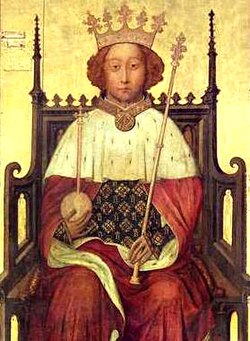

_-_Charles_I_(1600-1649)_-_RCIN_404398_-_Royal_Collection.jpg)
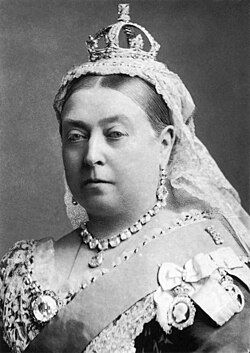
.jpg)
King Arthur was almost certainly fictional.
Alfred the Great (871-899) of Wessex, stopped western England from being conquered by the Vikings and burned some cakes.
William I the Conqueror (1066-1087) came from Normandy (now in northern France) and invaded the fuck out of England. His funeral began the British custom of lining monarch's coffins with lead. His corpse was decayed so badly that priests tried to stuff his corpse into a too-small coffin. When his "swollen bowels burst, and an intolerable stench assailed the nostrils of the by-standers and the whole crowd."[69][70]
Richard I (1189-1199) was a dashing military leader played by Sean Connery, notable for spending much of his reign at the Crusades.
John (1199-1216) has gone down in history as a Bad King. He was the enemy of legendary outlaw Robin Hood. Following a revolt by England's barons, he was forced to sign the Magna Carta in 1215.[71]
Edward I (1272-1307) conquered Scotland and did horrible things to Mel Gibson.[72]
Edward II (1307-1327) wasn't much use, although ironically his weakness helped establish England's parliament. He lost Scotland again and proved useless against the French (the English still considered themselves king of France).[73] Because of his relationship with Piers Gaveston he has become something of a gay icon, despite being deposed and allegedly executed with a red hot poker up his bum.[74]
Edward III (1327-1377) had a 50 year reign and warred a lot, but his biggest place in history was being the first English monarch to be commonly known by an ordinal, to differentiate him from his predecessors Ed and Eddy. This also explains why earlier Edwards (Edward the Confessor etc) didn't get a number (the idea of continuing regnal numbering for non-confusing kings didn't really take off until the 16th century, but the three Edwards kept their numbers).[75]
Richard II (1377-1399) has gone down in history as a bit rubbish, thanks largely to Shakespeare. He came to the throne aged 10 and when he was just 14 he had to deal with the Peasants' Revolt when an army of peasants from Kent under the leadership of Wat Tyler marched on London; he promised nice things then betrayed them and had the revolt crushed, thus going down in infamy in working-class and Marxist history.[76]
Henry VIII (1509-1547) was a murderous lecher. He founded the Church of England and is perhaps the most portrayed British king in film and TV.[77]
James I (and James VI of Scotland) (1603-1625) was a man of learning and a power-mad dictator who believed in the Divine Right of Kings, i.e. the notion that the monarch is appointed by God.[78] He ruled both England and Scotland after 1603 but is best known for the King James Version, the bible translation he commissioned which is praised by some for its poetic qualities and by others as the actual literal word of God. Despite his homophobic views he expressed as King, he was known to have several male lovers in his private life.[79][80]
Charles I (1625-1649) lost his head in a tight situation although he's now a saint.
Charles II (1660-1685) was fun to have around.
James II (and VII) (1685-1689) was deposed for being too Catholic, setting up years of Jacobite rebellions by his followers.[81]
Willliam III (1689-1702) was the very Protestant king who took over from James II in 1689, sharing the throne with his wife Mary II. His victory over the Catholic King James in what's now Northern Ireland remains a point of contention there, with "King Billy" still a folk hero to Ulster Unionism.[82][83]
George III (1760-1820), whilst considered at the time to have been mad, is now thought to have suffered from a skin disease called porphyria which caused him extreme discomfort, although he may also have suffered from mania or other mental illness.[84] This however fails to explain why, in the course of a country walk, he supposedly addressed a tree in the mistaken belief that it was the King of Prussia — a nation also renowned for the mental instability of its ruling classes; sadly, some sources cast doubt on the tree story.[85]
George IV (1820-1830) was a genius at spending money, accruing millions in debt. He favoured extravagant building projects, fine clothes, eating and drinking. The last two somewhat undermined his sartorial ambitions, as he ended up with a 50-inch waist. He rarely appeared in public because of the derision caused by his spherical shape. he married in secret but later had the marriage annulled, and married a second time to pay his debts. He loathed his second wife and may have poisoned her.[86][87]
Victoria (1837-1901) is one of the most iconic of British monarchs for her refusal to be amused and her love of her German husband Prince Albert of Saxe-Coburg and Gotha.
Edward VII (1901-1910) mostly spent his time fornicating, drinking, and smoking. (Win!)
George V (1910-1936) apparently spent all his time stamp collecting, shooting at birds and shouting at passersby, whom he took for Bolshevik revolutionaries, from the windows of Buckingham Palace.
Edward VIII (1936), aka. the Duke of Windsor, is now well known for his affair with Mrs. Simpson and for being a Nazi sympathizer, although it was largely kept from the British public at the time.[88] Thank goodness he stepped down...
...paving the way for George VI (1936-1952), the shy stutterer who didn't want or expect the job, but had to do it anyway, since monarchy is the last remaining form of indentured servitude (as Logue says in The King's Speech).
And finally Elizabeth II (1952-2022), who for a long time showed no sign of ever packing it in - until she eventually did - much to the relief of her by-then-elderly successor Charles III.
Constitutional role[edit]
The monarch still has a variety of constitutional powers in the UK and some other Commonwealth countries. In most of these the monarch typically does as directed by the Prime Minister (or occasionally other ministers or parliament). But occasionally the monarch's constitutional powers allow actions against democratically elected representatives: notable is the dismissal of Gough Whitlam as Australian prime minister in 1975, which was done by someone in the palace acting on Queen Elizabeth II's behalf.[89]
Powers include:
- Appointing the prime minister, which is normally done after an election on the basis of who has the most MPs, but in situations where there is no overall control, this could prove controversial - by its nature, it can't be delegated to the PM.[90]
- Appointing Privy Council - the Privy Council was originally a body of advisers to the monarch, and now exercises a variety of functions supposedly on the monarch's behalf. It includes various politicians, religious leaders, and members of the royal family. Appointments are made under the advice of the government. It meets in secret and performs a number of functions including approving some public appointments, issuing royal charters for universities and other bodies, and issuing some secondary legislation.[91]
- Royal assent - all primary legislation must be approved by the monarch. The last time the monarch refused was in 1708.[92]
- Other appointments - judges and other roles are theoretically appointed by the monarch, but there are more rigorous selection procedures for many positions than just the king picking his favourite.[93]
- Suspend parliament - in 2019 Boris Johnson asked the Queen to suspend parliament for a few weeks to stop it voting against him; the Queen initially complied but this was later overruled when a court decided he had no right to ask her.[94] The Dissolution and Calling of Parliament Act 2022 also gave the monarch the right to dissolve parliament, triggering a general election, but there is a strong constitutional principle that this is only done on the advice of the Prime Minister.[95]
Pretenders[edit]
Britain has a long history of people saying "I'm the real king, not that bloke with the crown!", as has been the case with all monarchies. In the late medieval period, in the aftermath of the bloody and confusing Wars of the Roses, these included the picturesquely named Lambert Simnel![]() and Perkin Warbeck
and Perkin Warbeck![]() . Lambert Simnel (no relation to the cake
. Lambert Simnel (no relation to the cake![]() [96]) reportedly bore a close physical resemblance to family members of the recently deceased Edward IV (reigned 1461 to 1470 and 1471 to 1483) so in 1487 when Lambert (possibly not his real name) was around 10, his teacher Richard Simon started claiming he was a son of Edward or had some other good claim to the throne, changing his story several times. The same year, John de la Pole, Earl of Lincoln, decided to make Lambs the figurehead of a Yorkist rebellion against the Lancastrian King Henry VII, but after it failed Henry pardoned Lambert (who was still only a boy) and gave him a job in the royal kitchens as a spit-turner (presumably not the most pleasant of jobs, standing next to a fire turning a crank for hours); he later became a falconer before disappearing from history entirely.[97][98]
[96]) reportedly bore a close physical resemblance to family members of the recently deceased Edward IV (reigned 1461 to 1470 and 1471 to 1483) so in 1487 when Lambert (possibly not his real name) was around 10, his teacher Richard Simon started claiming he was a son of Edward or had some other good claim to the throne, changing his story several times. The same year, John de la Pole, Earl of Lincoln, decided to make Lambs the figurehead of a Yorkist rebellion against the Lancastrian King Henry VII, but after it failed Henry pardoned Lambert (who was still only a boy) and gave him a job in the royal kitchens as a spit-turner (presumably not the most pleasant of jobs, standing next to a fire turning a crank for hours); he later became a falconer before disappearing from history entirely.[97][98]
Perkin Warbeck was another Yorkist (and also not a cake![]() ); he claimed to be one of the "Princes in the Tower", sons of Edward IV who are generally believed to have been murdered by Richard III. He led a few small military rebellions against Henry VII, who was suprisingly lenient, initially pardoning Perkin once the latter admitted he was a fake, but eventually Henry's patience ran out and Perks was hanged in 1499.[99]
); he claimed to be one of the "Princes in the Tower", sons of Edward IV who are generally believed to have been murdered by Richard III. He led a few small military rebellions against Henry VII, who was suprisingly lenient, initially pardoning Perkin once the latter admitted he was a fake, but eventually Henry's patience ran out and Perks was hanged in 1499.[99]
Not all pretenders are fakes. People obsessed with royalty love to compile lists of who would be king or queen if the line of succession hadn't taken an irregular kink, for instance with the deposing of Richard II or the Wars of the Roses. If you really like Richard III (the hunchback child-murderer) then Simon Abney-Hastings, 15th Earl of Loudoun![]() (b. 1974) is his legitimate heir.[100]
(b. 1974) is his legitimate heir.[100]
The most famous pretenders were genuinely descendents of the Catholic James II of England (James VII of Scotland), who as mentioned above was unceremoniously deposed in 1689, one of the most glorious and memorable dates in British history.[101] Hence they are known as Jacobites, because Jacobus=James in Latin.[citation needed] James the non-IIIrd, the Old Pretender was James II's son; he was supported by Catholic monarchs in Europe during the War of the Spanish Succession, culminating in the failed 1715 invasion/uprising. His son was Charles Edward Stuart, Bonnie Prince Charlie, who led another unsuccessful invasion in 1745 as part of the War of the Austrian Succession.[102]
Charlie's son Henry non-IX didn't have any children, but that didn't stop Jacobitism, which was bizarrely popular for a long time. Initially it had the glamor of a secret tradition like the Freemasons, with coded toasts to the "King over the Water" and "Slainthe Mhor", which means "big health" in Scottish Gaelic but alludes to the fact that Charlie escaped Scotland disguised as a woman called Morag.[103] Later with the revival of tartanry and similar bullshit in the 19th century it ceased to be something you could be executed for and became fashionable.[104] This was despite the fact that most Scots were opposed to practical aspects of Jacobitism like Catholicism and absolute monarchy (the legacy of James's ancestor James I and VI), as well as being very suspicious of Charlie's constituency, the savage Highlander.[105]
Royal etiquette[edit]
According to the most influential commentary on the modern British Constitution, Monty Python's Brand New Papperbok (sic), it was advised never to say to the Queen:
"You don't look like you do on the stamps!"
Even if it's true. NB: Licking her head is also frowned upon, especially since she died.
See also[edit]
Types of government:
- List of forms of government
- Democracy
- Mobocracy
- Republic
- Imperialism
People:
- Charlemagne
- King David
- Princess Diana
- Jezebel
- Princess Märtha Louise of Norway
- Solomon
Misc:
- Books of Kings
- Kingdom of Hawaiʻi
- Red Queen's race
Notes[edit]
- ↑ Such groups tend to be all over the political spectrum, from far-right reactionaries to even socialists.
- ↑ Yup, a nobleman supporting monarchy - I bet you never saw that coming... More to the point, he was yet another product of the venerable Austro-Hungarian Empire that also gave us Friedrich August von Hayek and Ludwig von Mises of Austrian school fame/infamy [delete whatever is inappropriate], as well as some guy with a mustache.
- ↑ The essay actually tries to justify the phrase "by the grace of God" stopping short of "Divine Right of Kings."
- ↑ Granted, he called Franco "a dictator of the South American type."
References[edit]
- ↑ Excerpt from A Clash of Kings by George R R. Martin, plus links to reviews, author biography & more. Book Browse.
- ↑ Hochverursachte Schutzrede. Thomas Müntzer. 1524.
- ↑ The Fall of Rome and its Effects on Post-Roman and Medieval Europe. Medium.
- ↑ What Was the An Lushan Rebellion? ThoughtCo.
- ↑ Bouwsma, William J., in Kimmel, Michael S. Absolutism and Its Discontents: State and Society in Seventeenth-Century France and England. Transaction Books, 1988. ISBN 0887381804.
- ↑ The Age of Absolutism (17–18th Century). André Krowke
- ↑ Absolutism. Louix XIV.
- ↑ Freedom on the Net 2021: Saudi Arabia. Freedom House.
- ↑ The Population of the Vatican. Vatican.com
- ↑ North Korea’s Power Structure. Council on Foreign Relations.
- ↑ Saudi Arabia: 100 people executed as authorities continue relentless ‘killing spree’. Amnesty International.
- ↑ How Thailand Became the World’s Last Military Dictatorship The Atlantic
- ↑ What the Turmoil in Thailand Reveals About the Thai Monarchy Council on Foreign Relations
- ↑ "Jordan". United States Department of State. 2023-12-07. Retrieved 2024-05-29.
- ↑ "Royal Assent". UK Parliament. Retrieved 2024-05-29.
- ↑ Presse, AFP - Agence France (2022-09-09). "The Powers Of The UK Monarchy". Barron's. Retrieved 2024-05-29.
- ↑ Article 65.
- ↑ The Japan SelfDefense Forces Law: Translation, History, and Analysis. Cambridge Scholars Publishing.
- ↑ Japan’s Postwar Constitution. Council on Foreign Relations.
- ↑ Does British tourism really need the royal family? CNN.
- ↑ Thailand’s playboy king isn’t playing around. Vox.
- ↑ [Patmore, Glenn (2009). Choosing the Republic. University of New South Wales Press. ISBN 978-1-74223-015-3. p. 105
- ↑ See the Wikipedia article on Non-sovereign monarchy.
- ↑ Zulu king wants South Africa land reform to exclude his territories] Reuters.
- ↑ A Māori king who urged racial unity in New Zealand is laid to rest and a new queen rises. Associated Press.
- ↑ What Type Of Government Does The United Arab Emirates Have? World Atlas
- ↑ Applying Principle to Practice, Chapter 3 - Of the Old and New Systems of Government.
- ↑ 28.0 28.1 You Gotta Know These European Royal Families. National Academic Quiz Tournaments.
- ↑ Imperial China's Dynasties. National Geographic.
- ↑ primogeniture. "Legal Information Institute." Cornell Law School.
- ↑ From Agnatic Succession to Absolute Primogeniture: The Shift to Equal Rights of Succession to Thrones and Titles in the Modern European Constitutional Monarchy. Louisiana State University Law Center .
- ↑ The Treaty of Verdun. ThoughtCo.
- ↑ Line of succession to Saudi Arabia’s throne. Al Jazeera.
- ↑ Saudi crown prince signals family unity as succession looms. Reuters.
- ↑ Prince Elector of the Holy Roman Empire. Holy Roman Empire Association.
- ↑ Kingship, Elective Monarchy and Masculinity in Poland-Lithuania, 1574–1733. Northumbria University.
- ↑ Vasa, House of. Encyclopedia.com
- ↑ How Is a New Pope Chosen? United States Conference of Catholic Bishops.
- ↑ Monarchy. Royal Embassy of Cambodia.
- ↑ German Peasants' War. World History Encyclopedia.
- ↑ Mandate of Heaven. World History Encyclopedia.
- ↑ Freedom in the World 2024: Saudi Arabia. Freedom House.
- ↑ Lynn, John A. (1999). The Wars of Louis XIV: 1667–1714. Longman. ISBN 0-582-05629-2. pp. 334–335.
- ↑ Succession Crisis: The Roman Empire’s Hidden Weakness. "Goldwag's Journal of Civilization". Wordpress.
- ↑ 45.0 45.1 Salic Law and Female Succession. ThoughtCo.
- ↑ The Pragmatic Sanction. Lumen Learning.
- ↑ War of the Austrian Succession. National Army Museum.
- ↑ Carlist Civil Wars. Heritage History.
- ↑ 49.0 49.1 49.2 How Inbreeding Doomed the House of Habsburg. 23 and Me Blog.
- ↑ War of Spanish Succession. Lumen Learning.
- ↑ Japan's succession drama puts future of world's oldest monarchy in doubt. The Week.
- ↑ A royal love story: Queen Victoria and Prince Albert. Royal Museums Greenwich.
- ↑ Queen Victoria’s Family Tree: The Cousins Who Started World War I. Family Tree Magazine.
- ↑ How the ‘royal disease’ destroyed the life of Russia’s last tsarevich. Russia Beyond.
- ↑ The Dangers Of Royal Inbreeding. History Answers.
- ↑ How inbred is King Charles III? Lees, David.
- ↑ Amid tight budget, queen is pinching pennies along with rest of Britain, Washington Post
- ↑ Because "men are born and remain free and equal in rights
 " is fascist, everyone!
" is fascist, everyone!
- ↑ "Monarchy vs. Republic"
- ↑ See the Wikipedia article on King of Albania.
- ↑ See the Wikipedia article on Monarchy of Belgium.
- ↑ See the Wikipedia article on Otto of Greece.
- ↑ Encyclopedia of San Francisco: Emperor Norton
- ↑ Finley, Klint (22 November 2013). "Geeks for Monarchy: The Rise of the Neoreactionaries". TechCrunch.
- ↑ Traditional Monarchy is Neoreactionary
- ↑ Harry and Meghan: The union of two great houses, the Windsors and the Celebrities, is complete by Patrick Freyne (Mar 8, 2021, 23:00) The Irish Times.
- ↑ Environmental and Social Responsibility, Princeofwales.gov
- ↑ Prince Charles branded a 'snake oil salesman' by scientist, The Guardian
- ↑ An exploding king: Why Queen Elizabeth II’s coffin was lined with lead by Bryan Pietsch (September 21, 2022 at 1:39 p.m. EDT) The Washington Post.
- ↑ The Death of William the Conqueror by James Grout, Encyclopaedia Romana.
- ↑ See the Wikipedia article on John, King of England.
- ↑ See the Wikipedia article on Edward I of England.
- ↑ See the Wikipedia article on Edward II of England.
- ↑ Edward II: Derek Jarman's striking reflection on homophobia, Alex von Tunzelmann, The Guardian, 16 Aug 2012
- ↑ How many King Edwards has England had? Why I am irrationally enraged by regnal numbering, John Elledge, New Statesman, 17 May 2016
- ↑ See the Wikipedia article on Peasants' Revolt.
- ↑ TV and film's top eight portrayals of King Henry VIII, The Independent
- ↑ On the Divine Right of Kings, James I, 1609, from Works, Ch 20.
- ↑ See the Wikipedia article on Personal relationships of James VI and I.
- ↑ King James and the History of Homosexuality, Michael Young, 2016
- ↑ See the Wikipedia article on James II of England.
- ↑ William III, BBC History
- ↑ The Battle of the Boyne, BBC History
- ↑ What was the truth about the madness of George III?, Lucy Worsley, BBC News Magazine, 15 April 2013
- ↑ See the Wikipedia article on George III of the United Kingdom.
- ↑ George IV: The Royal Joke?, BBC History
- ↑ King George IV on Britroyals
- ↑ New clues to Edward VIII's 'Nazi links', BBC
- ↑ Gough Whitlam dismissal: what we know so far about the palace letters and Australian PM's sacking, The Guardian, 14 July 2020
- ↑ Appointment of prime ministers and the role of the King, Institute for Government
- ↑ See the Wikipedia article on https://en.wikipedia.org/wiki/Privy Council (United Kingdom).
- ↑ Royal Assent, Glossary, Parliament UK website
- ↑ What is the role of the monarchy?, University College London, Constitution Unit
- ↑ Johnson's suspension of parliament unlawful, supreme court rules, The Guardian, 24 Sep 2019
- ↑ Dissolution and Calling of Parliament Act 2022: Progress through Parliament, UK Parliament website, 28 March 2022
- ↑ See the Wikipedia article on Lambert Simnel.
- ↑ Rebellion of Lambert Simnel, Henry the Seventh by James Gairdner (pub. 1899), Tudor History, Ch IV
- ↑ Lambert Simnel, Spartacus
- ↑ The pretender to the English throne was hanged on November 23rd, 1499, Rachel Goble, History Today, Volume 49 Issue 11 November 1999
- ↑ See the Wikipedia article on Alternative successions of the English and British crown.
- ↑ 1066 and All That. W. C. Sellar, R. J. Yeatman, 1930
- ↑ See the Wikipedia article on Jacobitism.
- ↑ Jacobite secret symbolism and the Jacobite toast, Slainthe Mhor!, Anne McDonald, Scotland Study Centre, Oct 11, 2016
- ↑ Sir Walter Scott, Bonnie Prince Charlie and the Jacobites, The University of Edinburgh/FutureLearn
- ↑ Scotland's Empire: The Origins of the Global Diaspora, T. M. Devine
Categories: [Forms of government]
↧ Download as ZWI file | Last modified: 11/05/2025 15:17:58 | 141 views
☰ Source: https://rationalwiki.org/wiki/Monarchy | License: CC BY-SA 3.0
 KSF
KSF